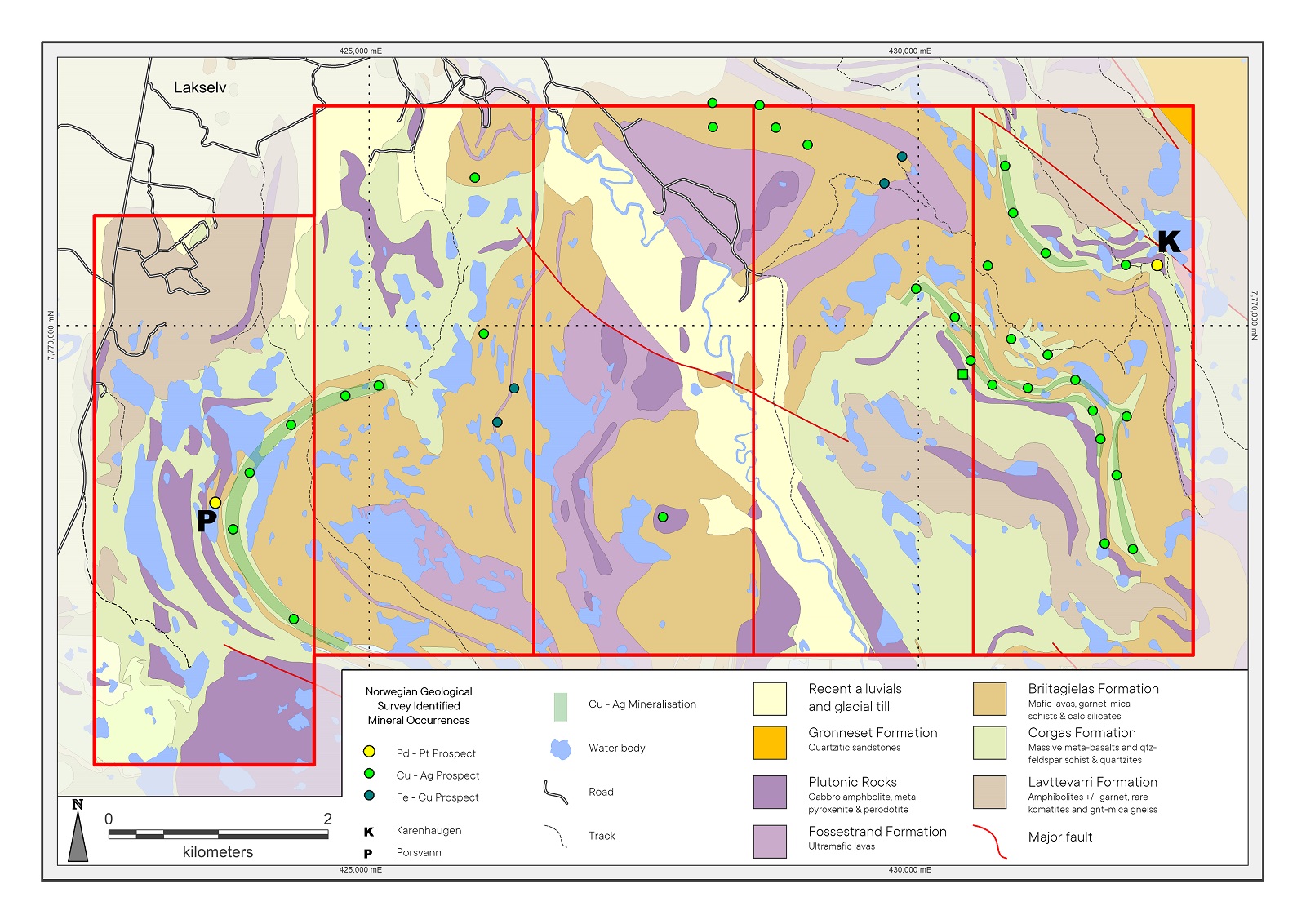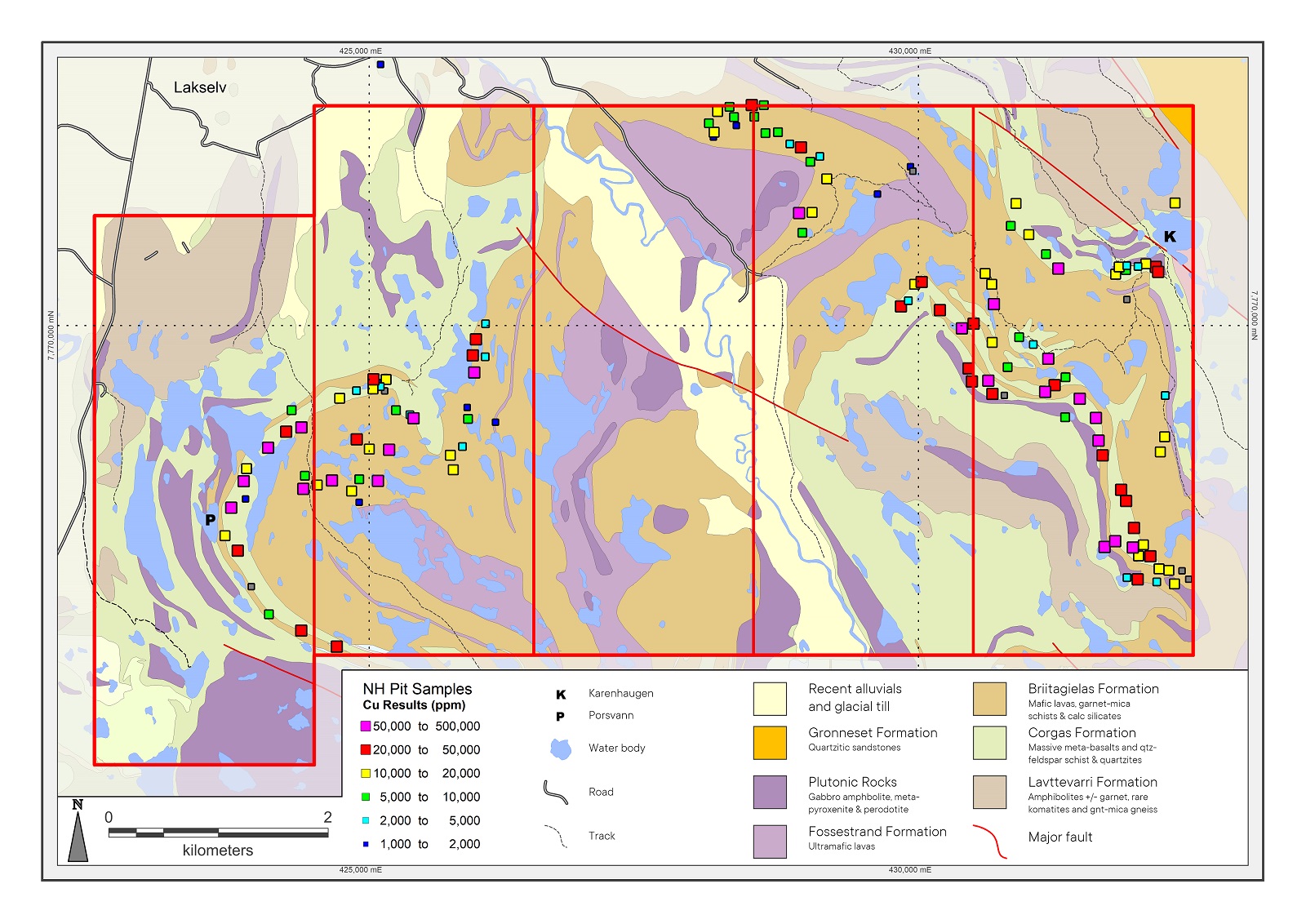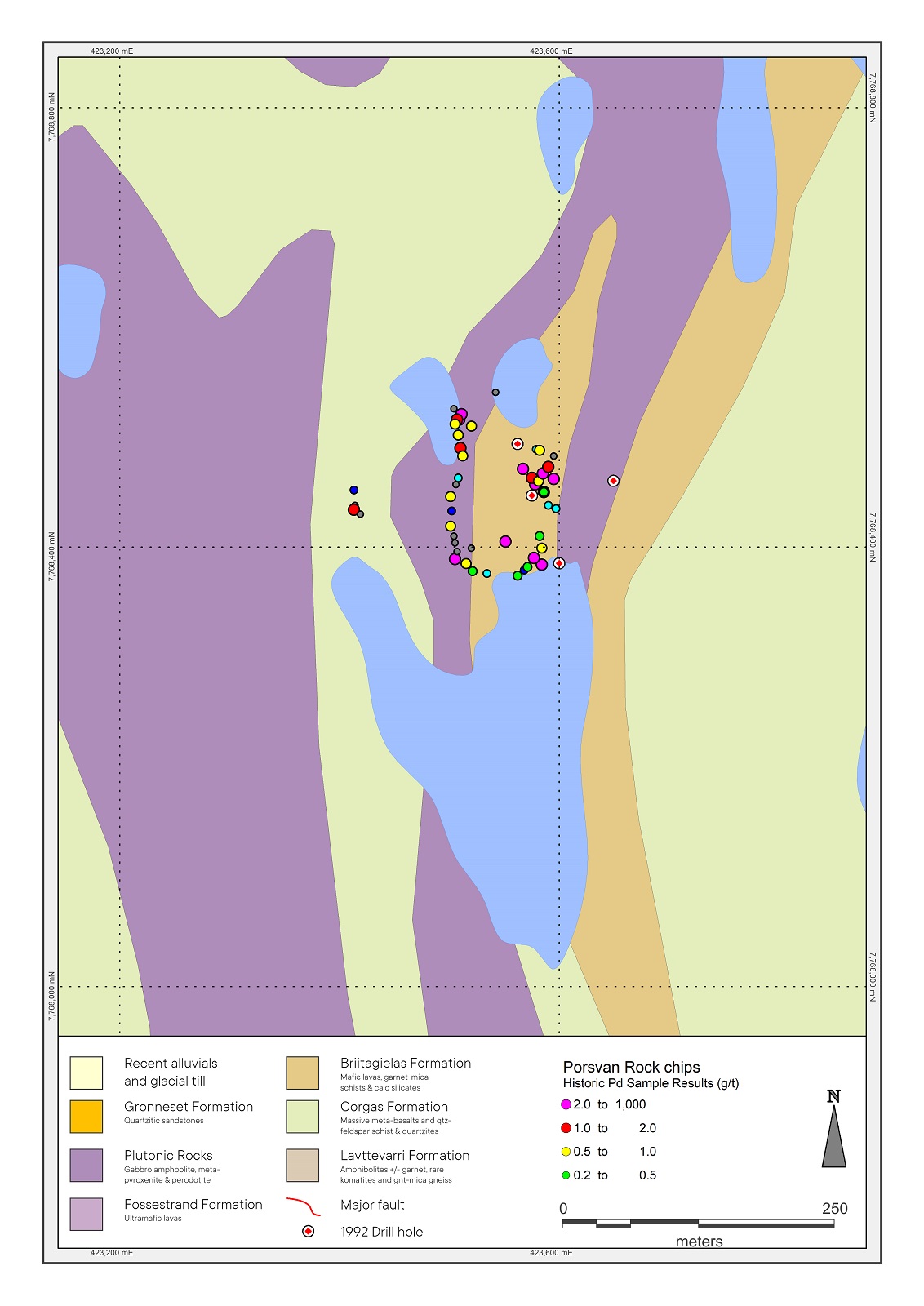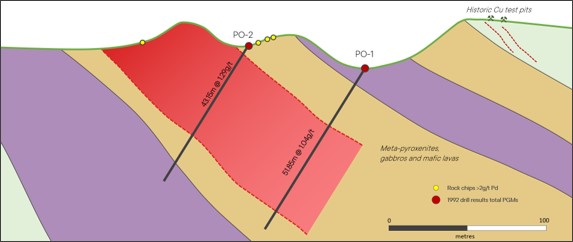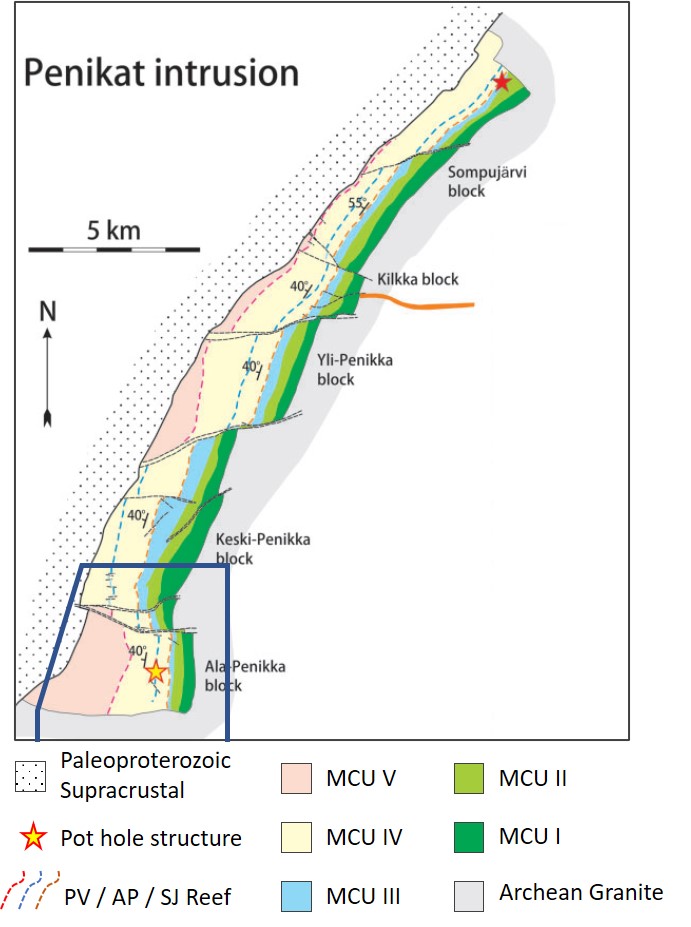Element 46
Element-46 Ltd is a private mineral exploration and development company with projects in Norway and Finland, with a focus on high-tech environmental metals used in industrial applications, emphasising PGMs.
E46 was founded in 2019 upon acquiring 100% of our first project, Porsanger, in Norway which contains a number of exciting palladium, platinum and copper occurrences over five neighbouring licences.
More recently, in April 2020, we have secured 100% of the rights over our second project, Penikat, in Finland – a Palladium-Platinum project that includes three previously-drilled prospects where high-grade PGMs were identified.
Portfolio
NORWAY
Norway has a long mining history, most famous for the Konigsberg silver mines near the capital Oslo which supplied over 10% of the Danish-Norwegian Union’s GNP for 355 years. The country is currently producing approximately 2Mt/yr of iron ore, is Europe’s largest graphite producer and supplies almost 50% of the worlds Olivine. The Tellnes titanium mine in southern Norway is the worlds largest hard rock Ti deposit and the similar Engebø Ti mine is awaiting grant of its final operational licence to enable construction to commence. Norway offers very transparent and proactive mining regulations with minimal holding costs and work programme requirements. This, together with competitive taxation of 22% and a mining royalty of 0.75% contribute to a favourable operating climate.
Our five Porsanger concessions cover a 5 x 10 km area and are accessed from the town of Lakselv in northern Norway.
The Porsanger Concessions
The Porsanger concessions are located in the north of the north-south trending Karasjok–Lakselv metallogenic zone which forms part of the 2.4 Ga Palaeoproterozoic Karasjok Greenstone Belt (KGB). Dominant rock types include quartzites, meta-greywackes, gabbros, meta-pyroxenites and amphibolites. Rocks of the KGB sit in an isoclinal recumbent syncline with two later fold-phases superimposed. Numerous copper occurrences have been recorded from highly deformed basalts with historic production recorded from several areas. Several meta-pyroxenites and gabbros have been identified, principally at Porsvann and Karenhaugen, and are the primary focus of our exploration efforts.
PORSANGER – PROSPECTS
|
PORSANGER – SAMPLINGNorsk Hydro (NH), 1980 pit sampling |
Porsanger – Porsvann project
- Outcropping mineralisation is hosted by meta-pyroxenite and amphibolites over a strike of 100 m.
- 4 diamond drill holes, totalling 360m, were completed by the Norwegian Geological Survey (NGU) in 1992, with best intercepts of:
- PO-1 51.85m @ 1.04 g/t Pd+Pt
- PO-2 43.15m @ 1.29 g/t Pd+Pt
- PO-3 33.00m @ 1.11 g/t Pd+Pt
- E46 rock chip sampling included highs of 13.6 g/t Pd & 4.0 g/t Pt.
POVSAN – GEOLOGY
|
POVSAN – CROSS SECTION
|
Porsanger – Karenhaugen project
- Karenhaugen covers an area of 1,000 x 400 m and includes 3 meta-pyroxenite intrusions.
- Historic sampling from 1990 – 2002 identified Pd-Pt mineralisation over a 500 m strike from one of the three intrusions.
- 18 samples assayed >1g/t Pd + Pt with a sample maximum of 4.6 g/t Pd and 1.4 g/t Pt.
- Historic geophysics indicate the intrusion may be more extensive than currently known.
FINLAND
Finland has a long history of mining activity, and Finnish metallurgical technology in particular is well known throughout the international mining community. The development of copper, nickel, cobalt, zinc and lead mines as well as chromium, vanadium and iron deposits has provided the raw material base for the country’s metal industry, with significant processing and refining of copper and nickel concentrates at Harjavalta, zinc at Kokkola, and chromium at Kemi. The Kevitsa mine is Finland’s largest magmatic sulphide deposit (Cu-Ni) with a 128 Mt reserve, secondary PGMs grade 0.32 g/t. Anglo American’s Sakatti deposit has a total resource of 44.4 Mt at 1.9% Cu, 0.96% Ni and 1.46 g/t PGE+Au. In total, Finland is host to over 30Moz of PGMs, Europe’s largest and most important source by far. Finland offers very transparent and proactive mining regulations with minimal holding costs and work programme requirements. This, together with competitive taxation of 20% and a mining royalty of 0.15% contribute to a favourable operating climate which has seen the country consistently ranked in the top 5 for attractiveness of doing business.
Penikat
The Penikat Layered Intrusion is located in central Finland and 20 km to the east of the city of Kemi and an operating chrome mine.
PENIKAT PROJECT
|
The layered series comprises primarily of (poikilitic) plagioclase-bronzite with intercumulus augite. Three reefs have been identified, namely:
Sompujärvi Reef (SJ)
- Characterised by concentrations of chromite, sulphide and olivine–pyroxene. The abundance of potholes in the floor has been recorded at numerous localities.
- A classic PGM reef sharing similarities with the Merensky Reef of the Bushveld Complex. The reef grades are variable, averaging 3.1 g/t PGM over 1.4 m (13 holes).
Ala-Penikka Reef (AP)
- The AP reefs formed by sulphide emplacement within new magma pulses. Pull-apart structures created a large pothole subsequently filled with sulphidic cumulates. Analogues are the mineralised anorthosites in the Monche pluton, Russia
- The Pothole mineralisation reaches 20 m thick at combined PGM grades of 4 g/t. Mineralisation is up to 100m long and has been tested to 200 m depth.
Paasivaara Reef (PV)
- The PV reef represents the residual liquid of the SJ reef and is slightly unusual in that it is hosted almost exclusively by anorthosites.
- Average grades are 2.3 g/t Pd and 3.9 g/t Pt over 1-4 m.
Management Team
-
Andrew Dacey - Director & CEO
Mr Dacey is a Registered Professional Geologist and a member of the Chartered Institute of Securities & Investments with over 20yrs of experience. Andrew is the principal geoscientist at consultancy Momentum Group.
Prior to founding Momentum in 2011, he spent four years as the mining specialist for the investment banking teams at Evolution Securities and Haywood Securities, where he worked on both financing and M&A assignments as well as providing strategic advice for natural resource companies. In 2005 he co-founded Lydian International, now developing the 5Moz Armulsar project, and in 2001 he discovered the 3Moz Aueq Golden Hills project in Mongolia.
He graduated with a degree in Geology from Victoria University of Wellington, NZ and completed a Masters of Economic Geology at CODES, Australia. He is a competent person as defined by both the JORC and NI 43-101 guidelines. LinkedIn
-
Dr Tim Coughlin - Director
Dr Coughlin is president and CEO of gold explorer Royal Road Minerals active in Colombia and Nicaragua. He has a PhD in structural geology, a MSc in exploration and mining more than 26 years of broad global exploration experience.
Tim is particularly experienced in post-conflict settings and in working with socially and economically damaged communities. Tim previously co-founded Lydian International and was responsible for the discovery of the +5Moz Armulsar gold deposit in Armenia. LinkedIn
-
Rémy Welschinger - Director
Mr Welschinger is the founder and managing director of Limehouse Capital, an investment holding company specialising in natural resources projects. Up until 2018, he was head of commodities sales in Europe for Deutsche Bank. Prior to that, Mr Welschinger was an Executive Director in the Fixed Income and Commodities division of Morgan Stanley in London.
Remy graduated from Cass Business School, London, with a MSc in Investment Management. LinkedIn
-
Ian Lynch - Chief Administrative Officer
Mr Lynch is a finance and corporate operations professional with over 12 years specialising in the natural resources sector and is experienced in various aspects of the administration of both private and public companies at varying stages and sizes. He graduated with a B.Com, Accounting & Law from the University of Johannesburg.
Ian is a director of HFS Consulting Ltd and has provided financial, corporate, operations and advisory services to start-ups and SME’s in natural resources, ecommerce and retail sectors in relation to projects and activities in Europe, Africa, Asia and Australia. He is the founder of Eightyone22, which promotes and encourages entrepreneurial ventures through the provision of affordable, early stage set-up and advisory services. LinkedIn
Exploration Programmes
FINLAND
- Verify historic drill core data
- High resolution magnetic survey to identify pot holes and feeder structures along the AP reef
- Natura 2000 and Mire assessment
- Complete an Environmental Impact Assessment and acquire drill permits
- Programme timeline Aug-Feb 2021
NORWAY
- Re-assaying historic drill core
- Surface sampling and mapping at Karenhaugen & the many basaltic hosted Cu-Ag prospects
- Re-interpretation of existing geophysics
- Complete an Environmental Impact Assessment and acquire drill permits
- Programme timeline Aug-Dec 2020
NEW OPPORTUNITIES
- Complete a European wide analysis of PGM projects, including Greenland
- Follow up a number of Swedish opportunities that have been presented and which may be complimentary to E46’s portfolio
PGM Sources and Uses
The Platinum Group Metals (PGMs) have wide ranging applications and are becoming increasingly vital in the environmental and clean energy sectors. Both increased emission standards and the rapidly developing hydrogen fuel cell technology are driving PGM demand. Primary uses for PGMs include:
- Catalytic converters for gasoline engines primarily use Palladium (Pd), diesel engines use platinum (Pt).
- Hybrid vehicles require significantly more Pd due to operating parameters, 5-10 g per vehicle instead of the 3-6 g in a conventional gasoline vehicle.
- Platinum is becoming increasingly important in the development of fuel cells; up to 1 oz is required for 150 hp of equivalent electrical generation.
- The purification of hydrogen gas relies partly on Pd due to unique properties exhibited by the metal.
Major sources of palladium and issues:
- South Africa (25%) – deeper mines, increased costs and labour disputes
- Russia (30%) – Norilsk Nickel processing lower grades from deeper levels
